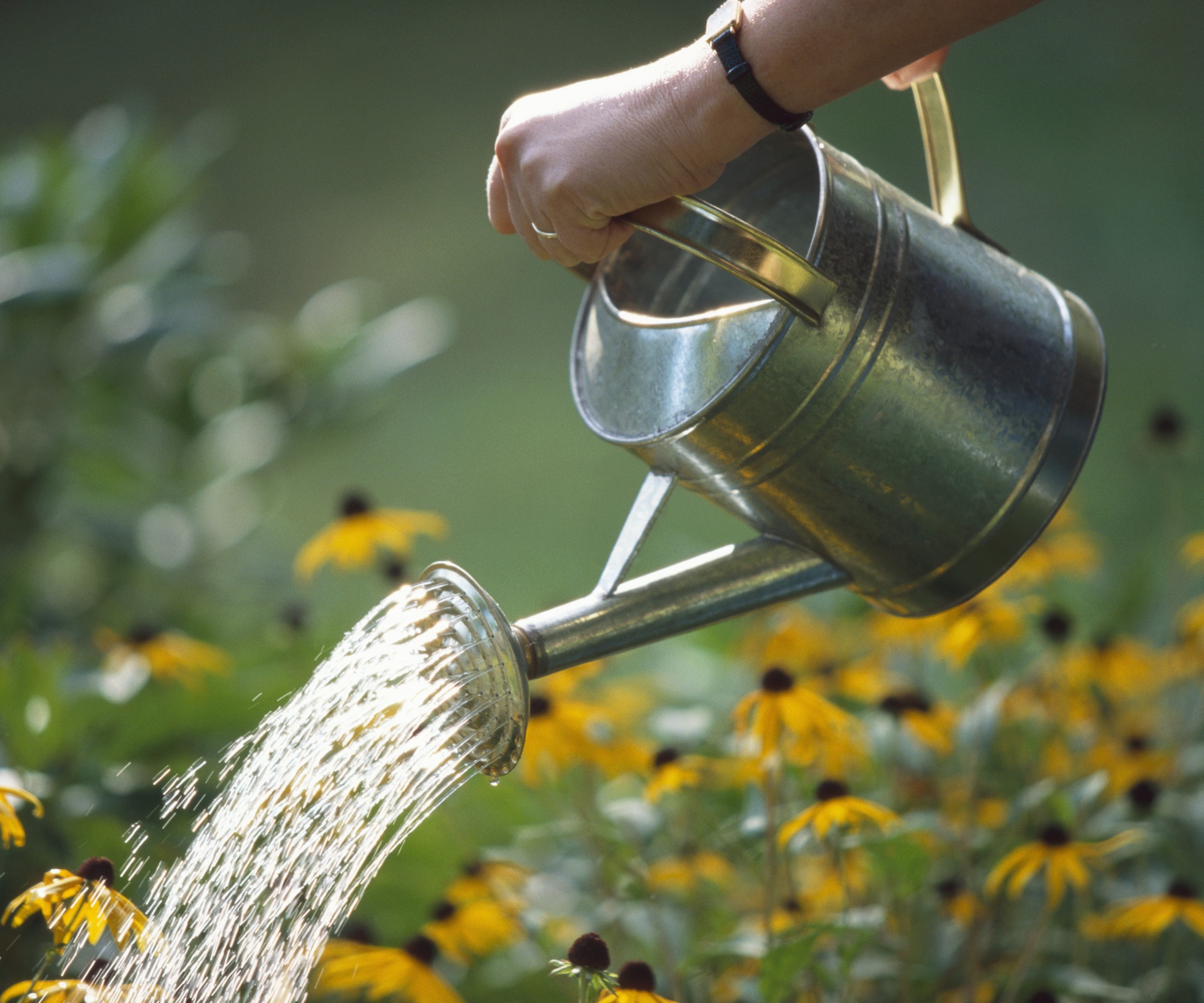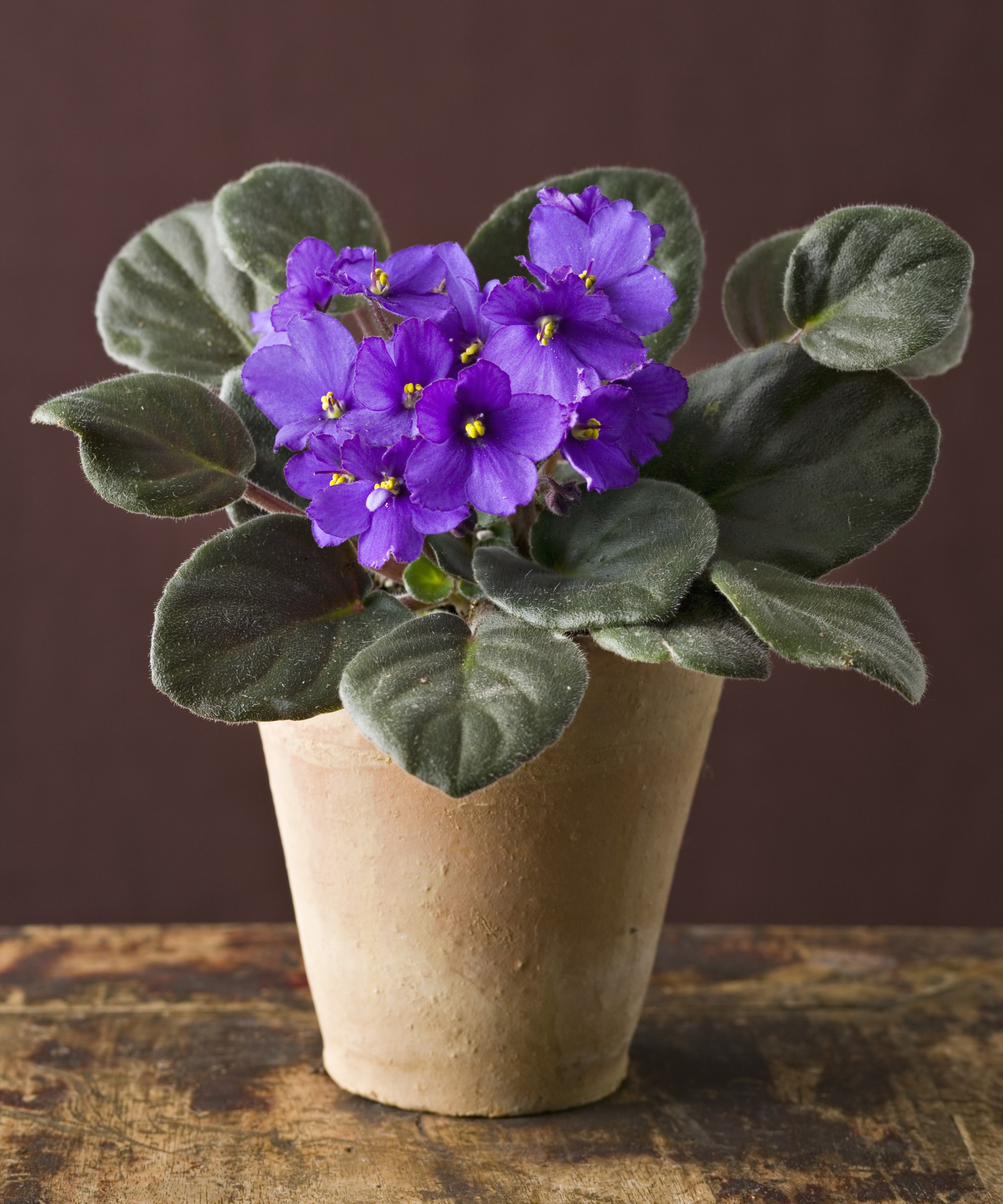Should you water plants from the top or bottom? Expert tips for watering more effectively
The type of plant, its size, and how you are growing it are all factors that influence the best way to water


Watering is the number one maintenance task that you need to do with plants, especially plants being grown in pots. You can either water plants from the top or bottom and each has unique benefits. Often it can depend on the species, growth stage, and growing conditions as to which technique is best.
The general school of thought is that watering from the bottom is the most effective way to water plants in pots. It thoroughly soaks all of the soil, encourages strong root development, and can also help avoid many fungal diseases that come with watering from above.
When judging when to water plants, and how to water plants, you need to try to understand the specific needs of each plant. Some will prefer to be watered from the bottom and others may need top watering, such as those in the ground or in large pots, though there are tactics you can utilize to help make watering from above more efficient.

Some plants are more suited to watering from above
Is it better to bottom water plants?
Watering plants from the bottom is the process of sitting a pot containing a plant into a container filled with water. This container can be a saucer, bucket, washing up bowl, or any other that will hold water.
The soil acts like a sponge and soaks up the water through capillary action. It is an efficient way of watering plants in containers and houseplants. Through watering from below it eradicates water being lost by running off the surface and ensures more than just the top layer is saturated. You can get self-watering planters that use the same capillary action to take water from a built-in water reservoir to the plant’s roots. An example of a self-watering planter for houseplants is the WOUSIWER 10 inch Self Watering Planters available at Amazon.
Sean Lade, irrigation expert and director of Easy Garden Irrigation, claims that effective watering is less about water volume but more about its ‘application and absorption in the root zone’.
He says: ‘Bottom watering, based on capillary action, draws roots deeper for moisture, fostering a healthier root system while reducing foliar disease risk by keeping leaves dry.
‘This method is typically efficient for potted plants, such as seedlings and sensitive species, although capillary action may be less effective in larger pots or less absorbent soils.’
Watering plants from above and splashing water on the foliage can lead to a number of fungal diseases, including rust, powdery mildew, and black spot. Whenever watering plants you want to aim the water at the base of the plant to get it to the roots, rather than simply dousing plants from above as simply watering the foliage is a common garden watering mistake to avoid.

Plants can be watered from below by sitting them in a kitchen sink filled with water
Should I ever water plants from the top?
It is not always possible to water plants from the bottom, such as for plants in outside flower beds and borders in the backyard. There is nothing wrong with watering plants from above in this case as top watering mimics natural rainfall and makes it effective for most outdoor plants.
You can also water plants in pots from above, it is a quicker method than watering from below. Plants in very large pots as part of grand container gardening ideas are likely to need watering from above as it is much slower for a large volume of soil to absorb water and also it may be difficult to move such containers, especially when the soil is full of moisture.
Sean Lade adds that there are good tactics to use to make top watering more efficient. He says: ‘The aim is to encourage deep water penetration, ensuring moisture reaches the entire root system. This can be achieved by watering slowly over extended periods or using a drip irrigation system that delivers water directly to the root zone.’
To focus on getting water to the plant’s roots and minimize the amount of run-off, other tools such as a long-spouted watering can also help to control water flow and get the moisture where it is most important. You can see a range of long spout watering cans on Amazon.
There are times when even plants in smaller pots, or houseplants, can benefit from being watered from the top.
Mark Lane, an award-winning garden designer and TV presenter, says that bottom watering over time can lead to a buildup of salt in the soil, which is detrimental to the health of plants.
He recommends: ‘Using a mixture of bottom watering for every day with top watering to wash away the build-up of salts and minerals will keep your plants healthy, strong and well-watered.’
The build-up of salts should be dealt with every couple of months by watering from above. Continue to water from above until the water runs out of the pot’s drainage holes to give the soil a good flush of salts.

Mark Lane is a multi-award-winning landscape designer with over 20 years of experience. He is also a regular TV and radio broadcaster and a published garden writer, as well as being the gardening expert for stairlift and homelift company Stannah.

Get as much water to the soil as possible when watering from above
Do any plants have to be watered from the bottom?
While watering from the bottom is beneficial for many plants, there are some that actively prefer to be watered in this way.
One particular example is the African violet, which is one of the best indoor flowering plants and can get spots on their leaves if any water gets on them from watering. Other house plants such as a spider plant, philodendron, peace lily and crassula also prefer to be always watered from the bottom.
Seedlings are vulnerable to damage from watering from above so should always be placed in a tray of water to soak up the moisture they require. This is a gentler way to water precious seedlings, help healthy root development and avoid common watering-related seed sowing mistakes.
There are other factors that make plants more suitable for bottom watering, including plants that don’t want to get their crowns wet and those which have such dense leaves that water struggles to get down to the soil surface. Watering from the bottom is also best recommended for plants grown in a soilless mix, such as in peat moss or coco coir.

An African violet can be left scarred by overhead watering
Are any plants better watered from the top?
Mark Lane recommends that watering succulents, such as sedum and echeveria, is best done from the top, as well as aloe and calathea. He adds: ‘All of these plants have shallow roots, so watering from the top means that these shallow roots get the water they need.
‘Cacti can also be watered from above, but rather than using a bottle or watering can, simply fill a bucket with water and dip and submerge the whole cacti and its pot. This will water the plant but also remove any dust or debris from the plant itself.’
Larger indoor plants, such as tropical plants and those with broad leaves, do benefit from watering from above. It mimics natural downpours and can clean off dust that has accumulated on the leaves, such as when watering a fiddle leaf fig or rubber plant. As well as cleaning dust, watering from above can dislodge insects or mites from leaves and stems.
FAQs
Can you overwater plants by bottom watering?
It is definitely possible to overwater plants by bottom watering. This comes from sitting the plant in water for extended periods of time. Overwatering can lead to waterlogged soil and root rot, which can cause harm to plants and even kill them. Do not leave a plant sitting in water for over half an hour and always allow excess water to run out of the holes in a planter for drainage before returning them to their chosen position.
Also take care not to allow excess water to collect in the reservoir or tray underneath the pot as it may lead to the soil taking in more water than the plant needs. A key lesson is to understand that not all plants absorb water at the same rate and each plant will have specific watering needs. Some plants have a more unique watering requirement like, for example, if you want to know how to water orchids the best way is to give it a weekly plunge into water.
How long should I bottom water my plants?
The length of time plants should be sat in a container will depend on two things, namely the size of the pot and how dry the soil has become. Sean Lade recommends: ‘A general rule of thumb is to let the plant sit in water for about 15-30 minutes, and then remove any remaining water. ‘
There are a lot of variables which impact whether watering from the top or bottom is best. However, whether you water from the top or bottom, the aim of watering should always be to get as much of the water as possible to the roots, where it is needed the most.
So always be efficient when watering, sit the plants in water where possible and where not always aim for the base. Do not simply tip a watering can from above the plant and water the foliage, this causes problems such as leaf scorch and fungal diseases. Being more targeted with watering will always make it more efficient and your plants will benefit massively.
Sign up to the Homes & Gardens newsletter
Design expertise in your inbox – from inspiring decorating ideas and beautiful celebrity homes to practical gardening advice and shopping round-ups.

Drew’s passion for gardening started with growing vegetables and salad in raised beds in a small urban terrace garden. He has worked as a professional gardener in historic gardens and specialises in growing vegetables, fruit, herbs, and cut flowers as a kitchen gardener. That passion for growing extends to being an allotmenteer, garden blogger, and producing how-to gardening guides for websites. Drew was shortlisted for the New Talent of the Year award at the 2023 Garden Media Guild Awards.
-
 Do cleaning products expire? Professional cleaners warn time could make them ‘less effective, and in some cases, irritating to use’
Do cleaning products expire? Professional cleaners warn time could make them ‘less effective, and in some cases, irritating to use’For the best results, it pays to stay on top of the timeline of your cleaning products
By Chiana Dickson Published
-
 7 of the best tomatoes for growing in pots - expert growers pick their top varieties ideal for large harvests from containers
7 of the best tomatoes for growing in pots - expert growers pick their top varieties ideal for large harvests from containersYou can enjoy bumper homegrown harvests in small spaces
By Drew Swainston Published